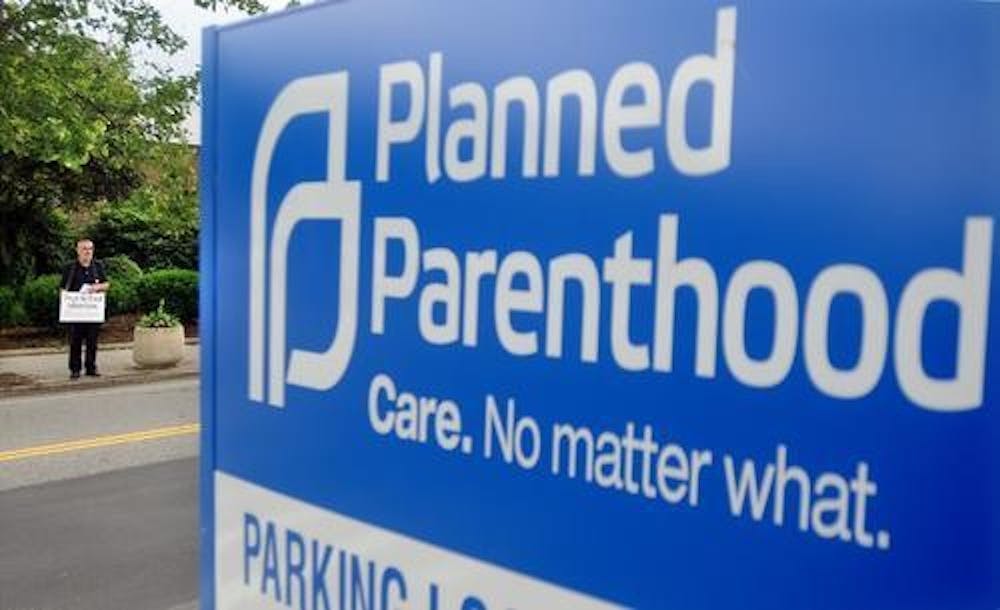Abortion is easily one of the most controversial issues in America. Anti-abortion groups commonly label women who choose to terminate pregnancies as “selfish.” But why have these groups ignored the physical and psychological effects of facing unwanted pregnancies and childbirth?
From a very young age, women have been taught to accept forced roles as caregivers and mothers. Gender-specific toys, especially baby dolls, that are marketed toward young girls create women whose lives are shaped by a flawed ideology that insists they become mothers in order to achieve happiness. Women are not limited to our ability to give birth, yet we all are expected to want to use this ability.
Anti-abortion groups rarely focus on the circumstances of each woman who chooses to get an abortion, claiming that choosing “life” is always the best decision. Additionally, the science behind fetal development and the aftermath of obtaining an abortion has been largely distorted to fit the beliefs of religious extremists. Some abortion providers are forced to give false information about the medical procedure increasing chances of breast cancer and infertility to their patients. Now, more than ever, it is time to educate people on why abortion is a medical procedure, not a deprivation of life.
Only around 1% of pregnancies in the United States end in abortion, according to a study by the Centers for Disease Control and Prevention. A record low of 623,471 abortions were reported to the CDC in 2016, a result of access to contraceptives and comprehensive sex education. Despite this, anti-abortion groups and politicians are under the impression that continuing the war on reproductive rights will effectively eliminate all abortions. Yet, the number of abortions is higher in countries where the procedure is illegal and these unsafe abortions are often carried out in life-threatening manners.
The science behind fetal development has been a cause for much debate among the pro-abortion rights and anti-abortion community, with the anti-abortion community largely believing that life starts at the moment of conception. Sean Tipton, chief advocacy, policy and development officer for the American Society for Reproductive Medicine, refutes these claims.
“There are a lot of fertilized eggs that never become human beings. Humans are notoriously inefficient producers, and we believe most [fertilized eggs] actually go out with a woman’s menstrual flow,” Tipton said.
Additionally, an embryo cannot survive outside of the uterus until 22 to 24 weeks gestation, and even then extensive medical intervention is required to save a prematurely born baby. According to the CDC, 91.6% of abortions take place during the first trimester of pregnancy, which is during the first 13 weeks gestation period and well before a fetus has the ability to survive outside of the uterus. Only 1.2% of terminations are carried out after 21 weeks into a pregnancy, and these are conducted due to fetal abnormalities or health risks toward the person carrying the pregnancy.
During the 2020 Golden Globes, Michelle Williams gave a speech about reproductive rights after winning the award for best actress in a limited series for “Fosse/Verdon.” In her speech, Williams vaguely discussed her own experience in “employing a woman’s right to choose” while encouraging all women to vote. Notorious anti-abortion activist Lila Rose took to twitter to criticize Williams’ speech, claiming that “no trophy is worth more than a child’s life.” I have one question for Rose: why is a pregnancy itself more important than a pregnant person?
Anti-abortion activists commonly claim that most women are coerced into obtaining abortions or believe that is the only option they have. According to a study by the Guttmacher Institute in 2005, 74% of women felt that “having a baby would dramatically change [their] life” in ways that they did not intend their life to change. Every individual’s reason for opting to end their pregnancy should be respected.
Furthermore, many anti-abortion organizations argue that adoption should always be an alternative to abortion for someone with an unwanted pregnancy. Adoption is an irrelevant topic in the debate between pro-abortion rights and anti-abortion activists. While women do not owe anyone an explanation for why they might be obtaining an abortion, they may have reasoning behind this choice beyond not wanting to be a parent. A pregnancy can be terminated because someone is unable or unwilling to go through nine months of pregnancy and later childbirth. However, adoption is still a choice for many people who are just unable or unwilling to go through parenthood.
I encourage everyone who is passionate about reproductive rights to educate others about the facts behind abortion and the many unique reasons someone may choose to terminate their pregnancy. Additionally, the Hyde Amendment bans federal funding from going towards abortion. As a result many abortion providers such as Planned Parenthood rely heavily on your support and donations so that they can provide these necessary services to their patients. While everyone should have the right to continue or discontinue a pregnancy, abortion is a medical procedure that should be available to those who choose the latter.
Rama Sardar (she/her) is a freshman studying media and filmmaking. She aspires to become a film director and a screenwriter.






